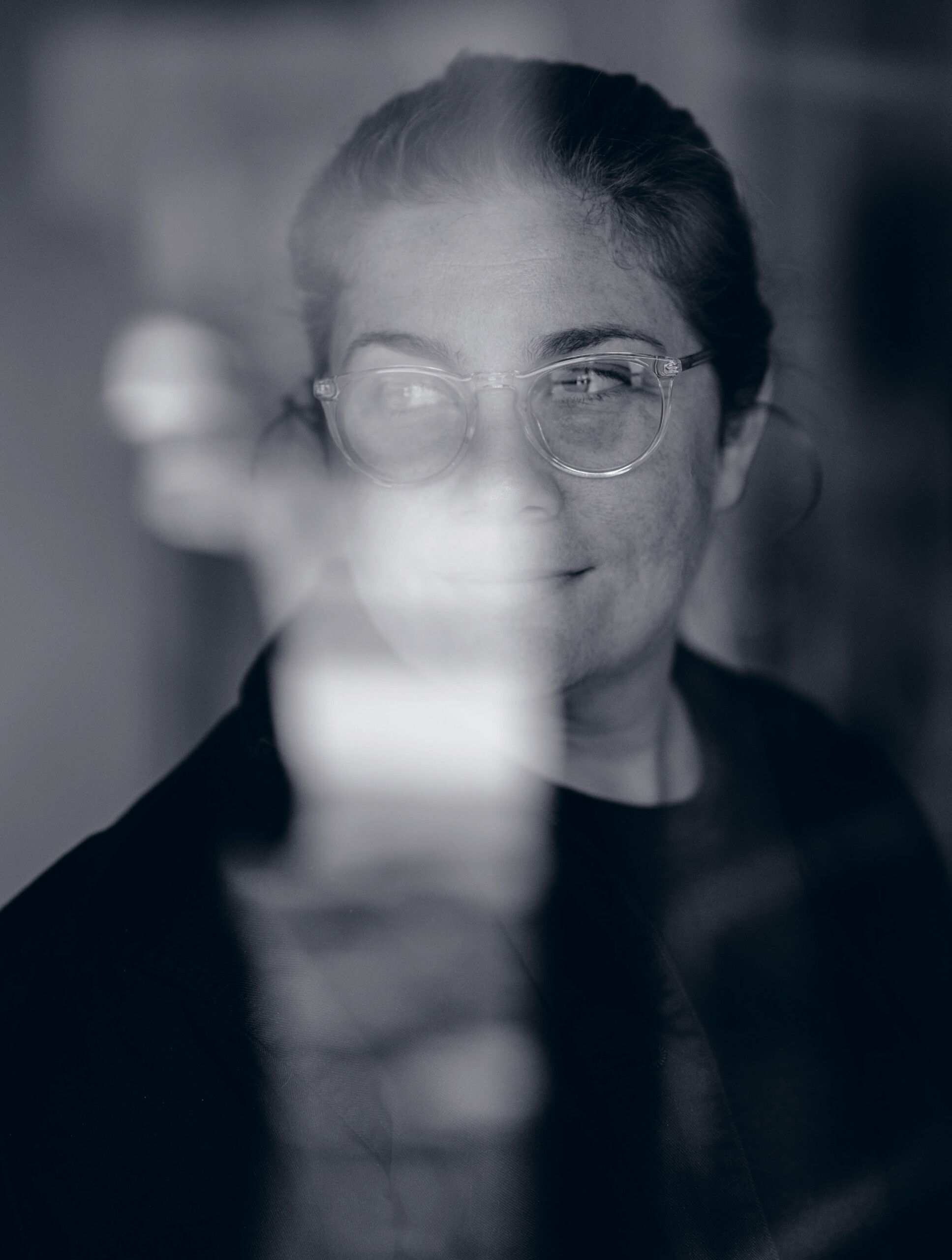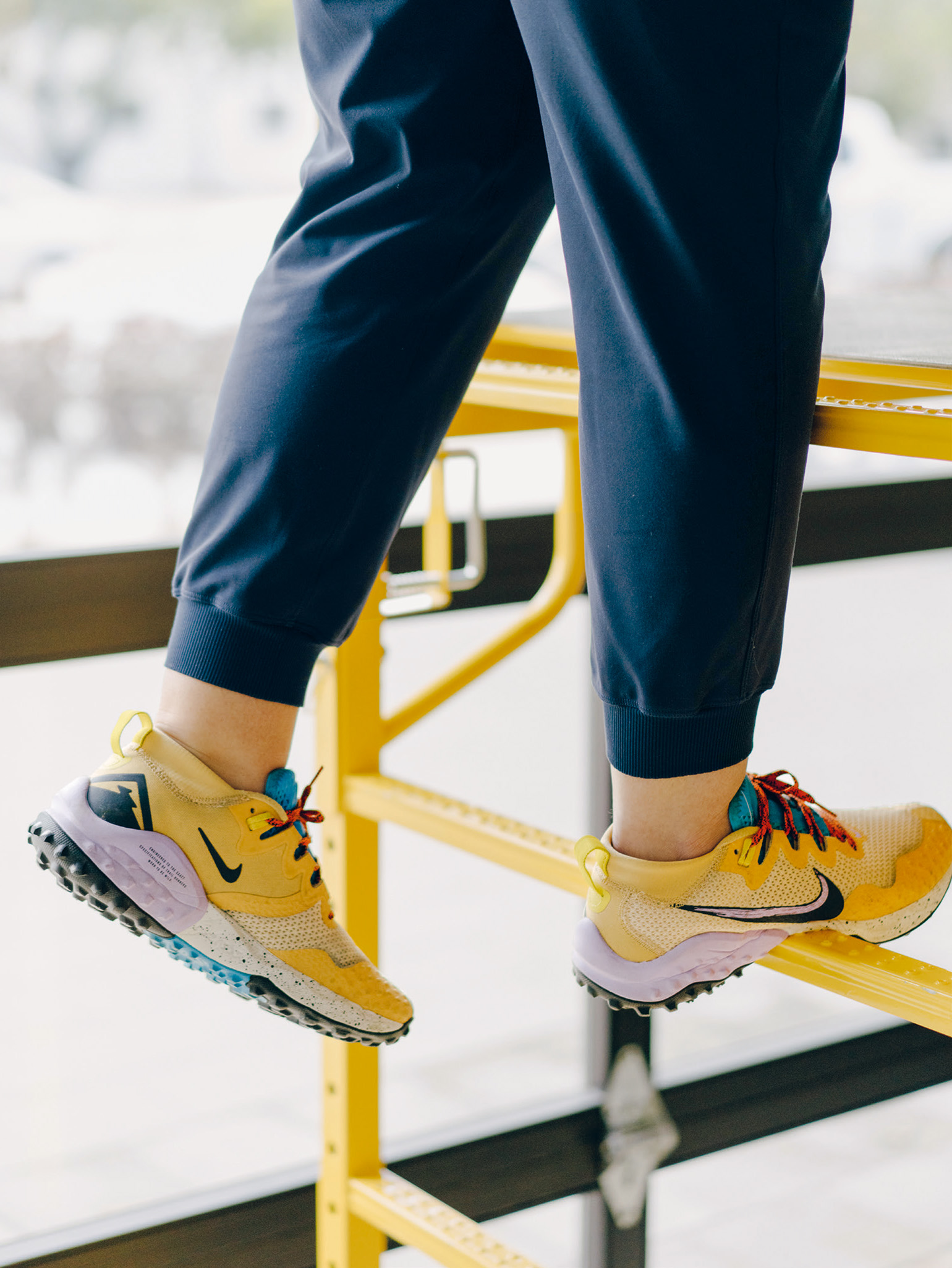SCEPTICAL
OPTIMISM
Madeline Gannon


Wired called her a ‘robot whisperer’, a tamer of industrial robots. Despite her years of incredible success, Madeline Gannon still feels like a continual outsider in the world of robotics. Yet the ATONATON founder and trained architect resolutely builds bridges between the world of robotics and the world of art. After all, her ultimate goal is pretty human: to empower more people to participate in the discourse of rapidly changing technologies.
Shouldn’t we be afraid of robots and AI? In Europe at least, there are many people who are sceptical.
M
G
I think we should be afraid of them. There are a lot of reasons to be sceptical. There are a lot of reasons to be wary. And as a society, we have collectively landed on what we don’t like about this technology. Where I see a gap—what’s missing—is knowing what we actually do want to do with it. My work brings an innate sense of optimism, sceptical optimism, in trying to discover the things we actually want this technology to do. I think it is important to inspire people that come from more diverse backgrounds, with different value sets than normal Silicon Valley techno-optimist values, to get involved and engaged to discover what this technology can do for us that we actually do want.
-
-
-
-
Very well. So we don’t really know what to expect from this kind of technology? What is really in store for us, then?
M
G
Well, the narrative around this is overwhelmingly dystopian. And that’s not just about technology. It goes back to all sorts of mythologies—across all cultures and all times. We have a bit of a God complex around artificial intelligence and robotics, as we are making this thing in our own image, and we don’t know if we’re making Frankenstein’s monster, if we’re flying too close to the sun. So we have this dystopic view ingrained within us—and reinforced through Hollywood as well. There are enough voices that are putting us on guard for what the negative outcomes can be, but not enough imagination is devoted to exploring the amazing possibilities that are at the edge of what’s probable and possible for how this is going to intersect our lives.
-
-
-
-
What is your history with robots? Your first encounter, the magic moment when you decided: this will be my playing-field!
M
G
I trained as an architect and I was going to school to learn how to build buildings. I happened to graduate at a time in the US when there was a huge recession and zero architecture jobs. So I decided to go on and specialise in something. I was so interested in all this digital stuff that was happening in our field, and at the time what I really wanted to do was to become a curator, because I thought, That’s how I can contribute to this narrative; that’s how I can help guide and grow how this tech will impact our lives.
-
-
-
-
And …?
M
G
I got rejected from all the history theory and criticism schools that I applied to, but I happened to get into one program at Carnegie Mellon University, which happened to be very, very technical, and that happened to be very, very intimidating for me because I had zero programming experience going in. So then I was on a mission to learn how to talk to these machines—to become one of those people actually making these things. And lo and behold, in a third sub-basement of a building, I found a lonely robot just sitting there, not really doing anything.
-
-
-
-
Sounds like the perfect setting for a crappy SF movie, even a bad horror SF movie ...
M
G
… a really bad one (laughs). Carnegie Mellon is based in Pittsburgh, a rust-belt city of the United States that was formerly the heart of the steel industry. And so, there are a lot of sub-basements with strange machines just sitting there, kind of lonely. And at the time, I knew as much as the instructor about how to use this machine, which was nothing. We didn’t know what we weren’t supposed to do with the robot. And so I immediately started to apply the tools and techniques I was learning in interaction, to misuse this machine that’s meant for automation. When I did an artist residency with Autodesk, they shot a video that was just running some demo code of me moving the robot with my hand gestures. The video got a lot of traction online, and people kept asking me for more of that. This was the first time in my mind that I saw a spark: people weren’t seeing this as a piece of manufacturing equipment. They were seeing our relationship—that just our bodies could communicate primal things in space. Ask any dancer or performer, and they’ll tell you that the motion of our bodies communicates things in space. Applying that mindset, these sensibilities, to robotics was something quite novel at the time. And it has been amazing to really pull at that thread of curiosity of: how would an architect program robots?
-
-
-
-
Please select an offer and read the Complete Article Issue No 15 Subscriptions
Already Customer? Please login.
